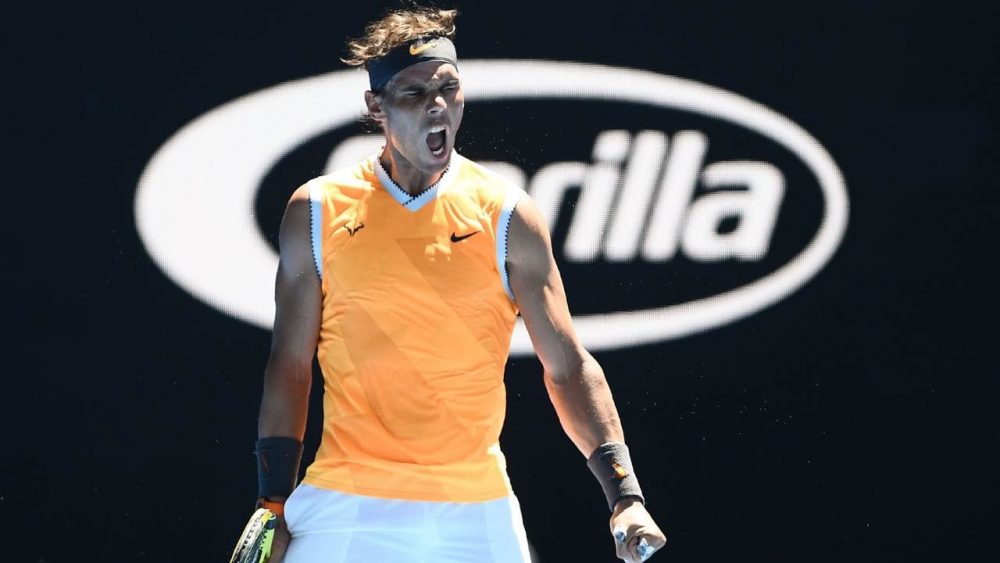A week before the Patriots and Rams face off, the real “big game” is set to take place at Rod Laver Arena in Melbourne. Rafael Nadal-Novak Djokovic LIII is upon us.
Officially bringing them even with the number of American football championships, it’s no overstatement to say this is the most prolific individual rivalry in the history of world sport. It’s also one of the greatest, and it’s only fitting that at the site of their most famous match, Nadal and Djokovic square off once again.
Read on for our preview of the 2019 Australian Open Men’s singles final.
The Storylines
For a match that will have no real impact on either man’s ranking, you’d be hard-pressed to find one with bigger consequences.
As ever with these two, this match is about the GOAT debate. Nadal wins, he becomes the third man to ever win multiple titles at each of the majors, and gets within two of Roger Federer’s tally of 20 with the French Open undoubtedly his to lose. Djokovic wins, and he pulls ahead of Pete Sampras with 15, but also being a year younger than Nadal might be even better poised to overtake Federer than the Spaniard is.
The Form
Delivering two of the most dominant grand slam semi-final performances in recent memory, it’s safe to say both Nadal and Djokovic come into this one playing about as well as they possibly could be.
Through six rounds, Nadal is yet to drop a set, and is playing arguably his best hard-court tennis since the 2010 US Open. While he benefitted from a trio of overmatched Aussies to open his tournament, his last three victories over Tomas Berdych, Frances Tiafoe and Stefanos Tsitsipas have been absolutely immense, with each thoroughly showcasing the Spaniard at his impossibly resolute, ball-bending best.
In contrast, Djokovic seemed to be unable to reach top gear through the first five rounds, but neither Jo-Wilfried Tsonga, Denis Shapovalov, Daniil Medvedev or Kei Nishikori had enough to truly push him. Then the semi-final with Lucas Pouille happened. Seemingly at the flick of a switch, the Serb was playing ridiculously well, recording only five unforced errors in a match that did not see him lack for offensive ambition. Suffice to say, he’s found that top gear.
The Matchup
The most prolific rivalry in the open era, the first 52 editions of Nadal v Djokovic have produced some of the most hard-fought, dramatic, and simply brilliant tennis ever played. This one should be no different.
Two defensive baseliners with an offensive arsenal most attacking players can only dream of, their matches against are very much a case of an unstoppable force against an immovable object, with the added caveat that both can be both things, sometimes even at the same time. As such the matches tend to be incredibly drawn out, yet characterised as much by their long, punishing rallies as individual moments of brilliance.
However, there is a very important disclaimer here, and it’s not one Nadal fans are going to like. As evenly-matched as they are as players, the results suggest that off clay, Djokovic holds a slight, but consistent edge. Case-in-point, the Serb is 18-7 for his career against Nadal on hard courts, and hasn’t lost any match off clay to the Spaniard since the US Open final in 2013, even if many of those were classics.
With that in mind, despite Nadal’s tourney, Djokovic has to be the favourite here. As good as the Spaniard has been, the fact still remains that off clay, Djokovic hits deeper, slightly more penetrating groundstrokes that travel through the court quicker, and that means a less palatable ball for Nadal, who must play more balls from defense or neutral while the Serb can build an attack. Of course, being the great player he is, this isn’t always an impediment to Nadal winning, but when if his opponent is as resolute on defense as he is, it tends to take its toll.
So with that said, how can anyone expect Nadal to win? Well to quote John Lennon, it’s easy if you try. Even at his best, Djokovic’s game is dependent on building that pressure – where other prominent conquerors of Nadal over the years (Lukas Rosol, Juan Martin Del Potro, even Roger Federer) hit winners because they can, Djokovic mostly does so only when he should, and when an attack goes awry – as it so often can against Nadal – the Serb leaves himself open for counterattacks. Still you need some serious shotmaking to pull such counters off, but guess who just put on an exhibition of in shotmaking in his semi-final? That’s right, Rafael Nadal.
Additionally, Nadal’s improved serve will play a factor, even if Djokovic is the best returner the sport has ever seen. Just the occasional cheap point can make a difference in getting through service games, and the less pressure off his serve, the more Nadal can put on the Serb with some free-wheeling shotmaking. It might be enough to turn the tide.
In any case, the margins are incredibly thin. Does Djokovic eventually prove too overwhelming, or will Nadal break him down? Either way, it’s going to take plenty of back and forth, probably five sets, and a conservative minimum of four hours on court. Indeed, if there’s only one thing you can take away from this section, it’s that you should bring plenty of popcorn.
The Prediction
Djokovic in five. It might require three days, two umpires, and a whole new set of hastily-trained ballkids, but eventually the Serb’s weight-of-shot should allow him to edge it. Much has happened in the three long years since Djokovic last won this major, but finally, he will stand alone with seven AO titles.















